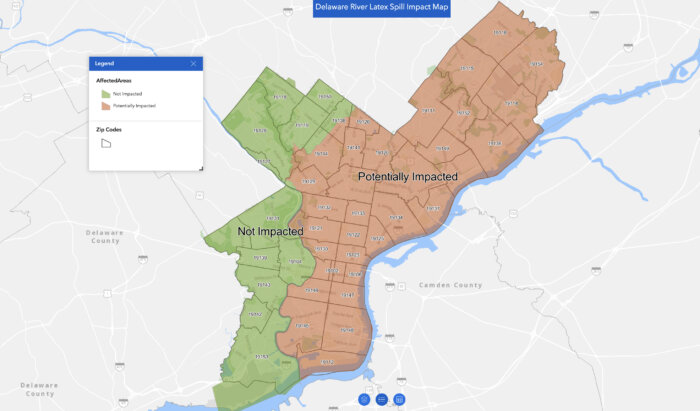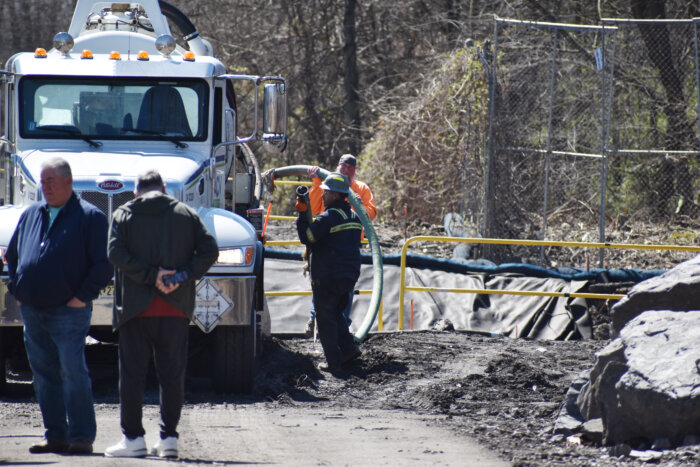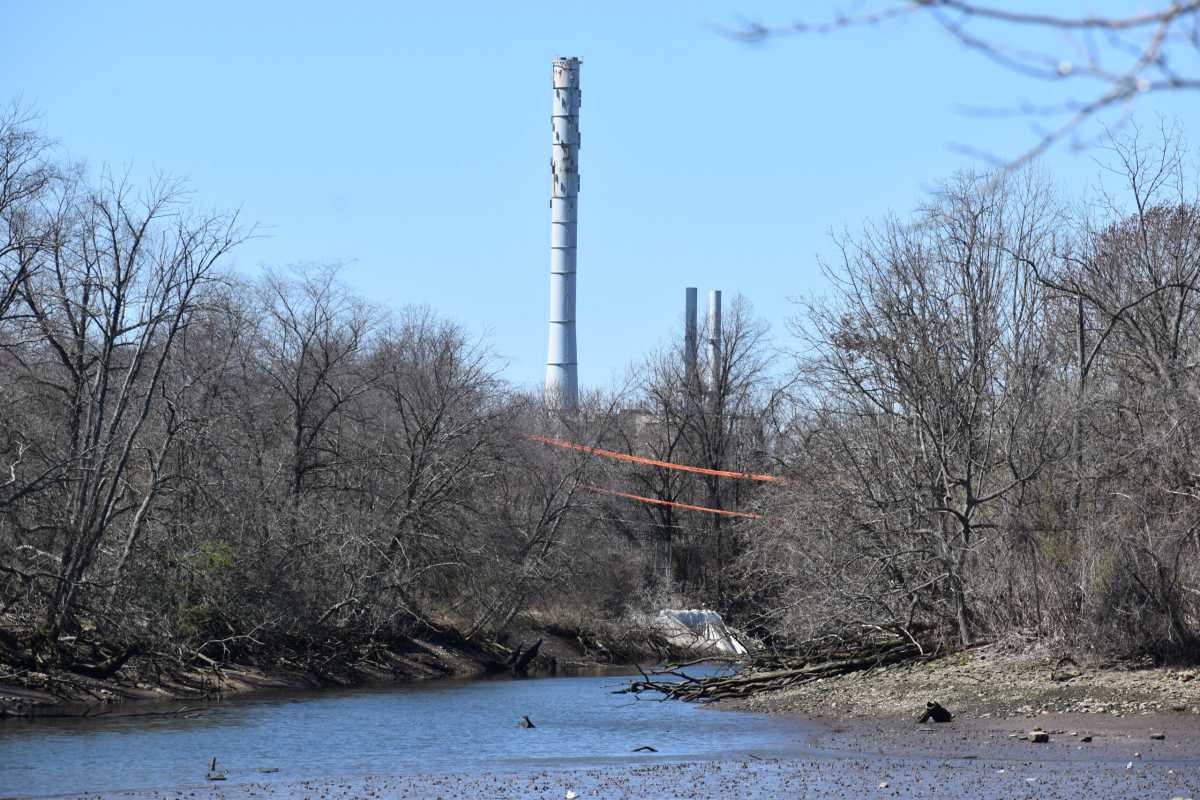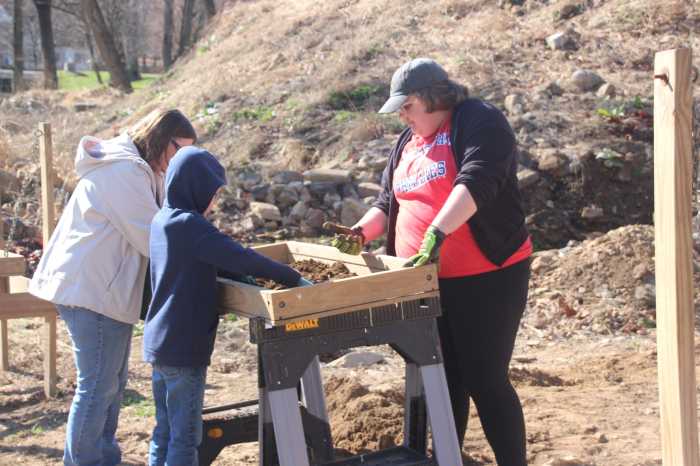Philadelphia officials advised residents Sunday to avoid drinking or cooking with tap water following a latex chemical spill into a Bucks County creek that flows into the Delaware River.
In an alert to residents in the afternoon, the city recommended consuming bottled water from 2 p.m. Sunday “until further notice.” Then, at 3:30 p.m., the Philadelphia Water Department said it was “now confident” tap water would be safe through 11:59 p.m. Monday, based on sampling results and modeling. Officials said there is no need to run to the store for water.
“This updated time is based on the time it will take river water that entered the Baxter (treatment plant) intakes early Sunday morning to move through treatment and water mains before reaching customers,” the department said in a statement.
“The water that is currently available to customers was treated before the spill reached Philadelphia and remains safe to drink and use for bathing, cooking, and washing,” the statement continued.
No contamination has been detected in the city’s water supply, officials said, although the water department continues to monitor the situation.
The Delaware River serves as the drinking water source for all of South Philadelphia, Center City, North Philadelphia, the River Wards, Northeast Philadelphia and part of Northwest Philadelphia. Water for other neighborhoods is drawn from the Schuylkill River.

Aqua Pennsylvania, which provides drinking water to Bristol Township, Bristol Borough, Croydon and Lower Bensalem, said it has not detected any chemicals and will pull water from sources other than the Delaware River if needed.
An estimated 8,100 gallons of latex polymer from the Trinseo Atlugas manufacturing facility was released into Otter Creek, also known as Mill Creek. Authorities became aware of the leak late Friday night, just before midnight.
Representatives from the Pennsylvania Department of Environmental Protection said the chemical solution was no longer leaking into the waterway as of early Sunday.
Butyl acrylate – which was also released in the East Palestine, Ohio train derailment – and ethyl acrylate were among the chemicals involved in the spill, Carroll told reporters. Both can cause irritation to the eyes, skin and respiratory system, according to the U.S. Centers for Disease Control and Prevention.
“The health risks are very low, if present at all, and they would be long-term in nature,” Carroll said. “There are no acute effects associated with the low level of exposures of these contaminants that we are seeing.”
Though Philadelphians reported odd smells over the weekend, there is no danger from the fumes, he added.
No chemicals have been detected in drinking water intakes in the region, and fish and wildlife appear unaffected so far, the state DEP added in a statement Sunday afternoon.
“We are working closely with our partners to monitor the spread of the contaminants and we will hold the responsible party accountable,” Acting DEP Secretary Rich Negrin said.
The PennEnvironment Research Center and Policy Center called for an investigation into the cause of the spill and urged companies to move away from dangerous chemicals.
“This incident upstream of Philadelphia’s major drinking water intake is the latest reminder of why we must reduce the use of toxic substances and shift to safer alternatives wherever possible,” said Stephanie Wein, the environmental group’s clean water advocate, in a statement.

Trinseo, which is headquartered in Wayne, said in a statement Sunday that early indications indicate the spill was “the result of an equipment failure.” A latex emulsion product overflowed into a storm drain leading to the creek, according to the company.
The corporation’s statement describes the solution as 50% water, saying that the liquid is used in various consumer goods.
“We are conducting a thorough assessment of all of our systems and processes to identify and address potential vulnerabilities and will take the steps necessary to close any gaps,” Trinseo CEO Frank Bozich said.
The manufacturing facility is near the Burlington-Bristol Bridge and Otter Creek, also known as Mill Creek, which flows into the Delaware River near Bristol Borough’s waterfront park.
Early Sunday afternoon, environmental workers, DEP officials and borough administrators were seen coming and going from Maple Beach Road, which runs near the creek.
The creek empties several miles upstream from the Samuel S. Baxter Water Treatment Plant in Torresdale, which handles all of the city’s Delaware River drinking water.
Intakes at the plant were closed from 5 a.m. until Sunday afternoon, Carroll said. They were open between 12:15 a.m. and 5 a.m. Sunday to maintain minimum levels of water, according to the city.




























